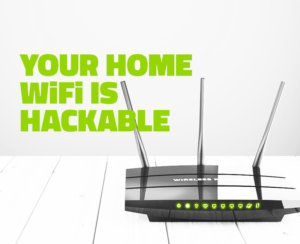
Increasing browser speed on a mobile device involves several steps to optimize performance. Here are some tips:
- Update your browser: Make sure you are using the latest version of your mobile browser. Updates often include performance improvements and bug fixes.
- Clear cache and cookies: Accumulated cache and cookies can slow down your browser. Clearing them regularly can help improve speed. Go to your browser settings and find options to clear cache and cookies.
- Limit open tabs: Having too many tabs open can consume memory and slow down your browser. Close tabs that you’re not using to free up resources.
- Disable unnecessary browser extensions: Some browser extensions can consume resources and slow down your browsing experience. Disable or remove any extensions that you don’t need.
- Reduce image quality: Many browsers have options to reduce image quality, which can help improve loading times, especially on slower connections. Look for options like “Data Saver” mode or image quality settings in your browser settings.
- Enable data-saving mode: Browsers often have a data-saving mode that compresses web pages, reducing the amount of data transferred and speeding up loading times. Enable this feature in your browser settings if available.
- Use lighter versions of websites: Some websites offer lighter versions specifically designed for mobile devices. They usually have fewer graphics and simpler layouts, which can load faster on mobile browsers.
- Close background apps: Other apps running in the background can consume resources and affect browser performance. Close any unnecessary apps to free up memory and processing power.
- Restart your device: Sometimes a simple restart can help clear out temporary files and refresh your device, leading to improved performance.
- Consider using a different browser: If you’ve tried everything and still experience slow browsing, consider trying a different browser. Some browsers may perform better on your device than others due to differences in optimization and resource management.
By following these tips, you should be able to increase the speed of your browser on your mobile device and enjoy a smoother browsing experience.
Update your browser
I don’t have the capability to update your browser directly, as I’m a text-based AI and don’t have access to your device. However, updating your browser is usually a straightforward process:
- For iOS Devices (iPhone/iPad):
- Open the App Store.
- Tap on your profile picture/icon at the top right.
- Scroll down to see available updates.
- Find your browser app and tap “Update” next to it.
- For Android Devices:
- Open the Google Play Store.
- Tap the Menu icon (three horizontal lines) and select “My apps & games.”
- You’ll see a list of apps with available updates.
- Find your browser app and tap “Update” next to it.
- For Desktop Browsers:
- Browsers like Chrome, Firefox, Edge, and Safari usually update automatically. However, you can manually trigger updates:
- In Chrome, click on the three-dot menu at the top right, then go to “Help” > “About Google Chrome.” Chrome will automatically check for updates and install them.
- In Firefox, click on the menu button (three horizontal lines) at the top right, then go to “Help” > “About Firefox.” Firefox will check for updates and install them if available.
- Similar options exist in other desktop browsers.
- Browsers like Chrome, Firefox, Edge, and Safari usually update automatically. However, you can manually trigger updates:
Keeping your browser updated ensures you have the latest security patches, bug fixes, and performance improvements.
Clear cache and cookies
Clearing cache and cookies can help improve browser speed and resolve certain browsing issues. Here’s how you can do it on common mobile browsers:
- Google Chrome (Android/iOS):
- Open Chrome and tap on the three-dot menu icon at the top right.
- Select “Settings” from the menu.
- Scroll down and tap on “Privacy.”
- Tap on “Clear browsing data.”
- Check the boxes next to “Cookies and site data” and “Cached images and files.”
- Tap on “Clear data” or “Clear browsing data.”
- Safari (iOS):
- Open the Settings app on your device.
- Scroll down and select “Safari.”
- Scroll down and tap on “Clear History and Website Data.”
- Confirm by tapping “Clear History and Data.”
- Safari (MacOS):
- Open Safari and go to the “Safari” menu in the top menu bar.
- Select “Preferences.”
- Go to the “Privacy” tab.
- Click on “Manage Website Data.”
- Click on “Remove All” or select specific websites and click “Remove.”
- Firefox (Android/iOS):
- Open Firefox and tap on the three-dot menu icon at the top right.
- Select “Settings” from the menu.
- Tap on “Clear private data.”
- Check the boxes next to “Cookies” and “Cache.”
- Tap on “Clear data.”
- Samsung Internet (Android):
- Open Samsung Internet and tap on the three-dot menu icon at the bottom right.
- Select “Settings” from the menu.
- Tap on “Privacy and security.”
- Tap on “Delete browsing data.”
- Check the boxes next to “Cookies and site data” and “Cached images and files.”
- Tap on “Delete.”
After clearing cache and cookies, you may need to sign back into websites, and some site preferences may be reset. However, it can often help improve browsing speed and resolve certain issues.
Limit open tabs
Limiting the number of open tabs in your mobile browser can help improve performance and speed. Here’s how you can do it in some common mobile browsers:
- Google Chrome (Android/iOS):
- Open Chrome and tap the tab switcher icon (square icon with a number) at the top right corner.
- You will see all your open tabs displayed in a grid.
- To close a tab, swipe it horizontally or tap on the X icon in the corner of the tab.
- Safari (iOS):
- Open Safari and tap the tab switcher icon (two overlapping squares) at the bottom right corner.
- You will see all your open tabs displayed in a carousel view.
- Swipe left on a tab to close it.
- Samsung Internet (Android):
- Open Samsung Internet and tap the tab switcher icon (square icon with a number) at the bottom right corner.
- You will see all your open tabs displayed in a grid.
- To close a tab, swipe it horizontally or tap on the X icon in the corner of the tab.
- Firefox (Android/iOS):
- Open Firefox and tap the tab switcher icon (square icon with a number) at the top right corner.
- You will see all your open tabs displayed in a grid.
- To close a tab, swipe it horizontally or tap on the X icon in the corner of the tab.
By limiting the number of open tabs, you reduce the amount of memory and processing power your browser needs, which can lead to improved performance and speed. It’s a good practice to periodically close tabs that you no longer need.
Disable unnecessary browser extensions
Disabling unnecessary browser extensions can help improve browser speed and performance on mobile devices. However, as of my last update in January 2022, mobile browsers generally have fewer extensions available compared to desktop browsers. Here’s how you can disable extensions on some common mobile browsers:
- Google Chrome (Android/iOS):
- Open Chrome and tap the three-dot menu icon at the top right corner.
- Select “Settings” from the menu.
- Tap on “Extensions” or “Extensions & themes.”
- You will see a list of installed extensions. Toggle off the switch next to any extension you want to disable.
- Firefox (Android/iOS):
- Open Firefox and tap the three-dot menu icon at the top right corner.
- Select “Add-ons” from the menu.
- Tap on “Extensions.”
- You will see a list of installed extensions. Toggle off the switch next to any extension you want to disable.
- Samsung Internet (Android):
- Open Samsung Internet and tap the three-dot menu icon at the bottom right corner.
- Select “Extensions” from the menu.
- You will see a list of installed extensions. Toggle off the switch next to any extension you want to disable.
- Safari (iOS):
- Safari on iOS does not support browser extensions, so there’s no need to disable them.
Keep in mind that disabling extensions removes their functionality from your browser. Only disable extensions that you don’t need or use regularly. This can help reduce memory usage and improve overall browser performance on your mobile device.
Reduce image quality
Reducing image quality in your mobile browser can help improve loading times, especially on slower connections. However, as of my last update in January 2022, many mobile browsers don’t offer direct settings to reduce image quality. Here are some general tips you can try:
- Use Data Saver mode: Some browsers have a data-saving mode that automatically reduces image quality and compresses web pages to reduce data usage. Enabling this mode can indirectly help in reducing image quality. Look for a “Data Saver” or “Data Compression” option in your browser settings.
- Use a browser with image quality settings: Some third-party browsers may offer settings to adjust image quality. Look for alternative browsers in your app store and check their settings to see if they provide options for reducing image quality.
- Use lightweight versions of websites: Many websites offer lightweight versions or mobile versions that are optimized for lower bandwidth and faster loading times. You can often access these versions by appending “m.” or “mobile.” to the beginning of the website’s URL.
- Disable image loading: Some browsers allow you to disable image loading altogether. While extreme, this can significantly improve browsing speed on slow connections. However, it will make websites look less visually appealing as all images will be replaced with placeholders or not loaded at all.
- Use ad blockers: Ad-heavy websites can slow down browsing due to the number of images and scripts they load. Using an ad blocker can reduce the number of images and improve loading times. However, be mindful of the impact on websites’ revenue streams.
Remember that reducing image quality may result in a less visually appealing browsing experience, so you may need to experiment to find the right balance between speed and image quality that suits your preferences and browsing habits.
Enable data-saving mode
Enabling data-saving mode in your mobile browser can help reduce data usage and improve browsing speed. Here’s how to enable it in some common mobile browsers:
- Google Chrome (Android):
- Open Chrome and tap the three-dot menu icon at the top right corner.
- Select “Settings” from the menu.
- Tap on “Lite mode” (or “Data Saver” depending on your Chrome version).
- Toggle the switch to enable Lite mode/Data Saver.
- Firefox (Android):
- Open Firefox and tap the three-dot menu icon at the top right corner.
- Select “Settings” from the menu.
- Tap on “Data Saver.”
- Toggle the switch to enable Data Saver.
- Samsung Internet (Android):
- Open Samsung Internet and tap the three-dot menu icon at the bottom right corner.
- Select “Settings” from the menu.
- Tap on “Advanced.”
- Tap on “Data saver.”
- Toggle the switch to enable Data saver.
- Opera Mini (Android/iOS):
- Open Opera Mini and tap on the “O” menu at the bottom right corner.
- Tap on “Settings.”
- Toggle the switch next to “Data Savings” to enable it.
- UC Browser (Android/iOS):
- Open UC Browser and tap on the three-line menu icon at the bottom right corner.
- Tap on “Settings.”
- Go to “Traffic Saving.”
- Toggle the switch next to “Data saving” to enable it.
Enabling data-saving mode typically involves compressing web pages and reducing image quality to minimize data usage. Keep in mind that while data-saving mode can improve browsing speed and reduce data consumption, it may also affect the appearance of web pages by reducing image quality and disabling certain features such as high-resolution images and videos.
Use lighter versions of websites
Using lighter versions of websites can significantly improve browsing speed, especially on mobile devices with limited resources or slower internet connections. Many websites offer mobile-friendly or lightweight versions specifically optimized for better performance on mobile devices. Here’s how you can access them:
- Use mobile subdomains: Many websites have a separate mobile version accessible through a subdomain like “m.example.com” or “mobile.example.com.” Simply type “m.” or “mobile.” before the website’s domain name in the address bar of your mobile browser to access the mobile version.
- Look for mobile-friendly links: Some websites automatically detect when you’re using a mobile device and redirect you to their mobile-friendly version. If you’re directed to the desktop version, look for a link or button that says “Switch to Mobile Site” or something similar.
- Opt for mobile apps: Some websites offer dedicated mobile apps that provide a streamlined experience compared to their mobile websites. Consider downloading the official app from the app store for better performance and functionality.
- Use AMP (Accelerated Mobile Pages): AMP is an open-source initiative designed to provide faster-loading web pages on mobile devices. When searching on Google, you may encounter AMP versions of articles and pages, indicated by a lightning bolt icon. Click on these links to access the AMP versions for faster loading.
- Consider browser extensions: Some browser extensions, such as “AMP Validator” for Chrome, allow you to force AMP versions of web pages when available, providing a faster browsing experience.
- Optimize browser settings: Many mobile browsers offer settings or modes specifically designed for faster browsing. Look for options like “Data Saver,” “Lite Mode,” or “Turbo Mode” in your browser settings, which can help load lighter versions of web pages and reduce data usage.
By using lighter versions of websites, you can enjoy faster loading times, smoother browsing, and reduced data consumption, making for a better overall browsing experience on your mobile device.
Close background apps
Closing background apps on your mobile device can help free up system resources and improve overall performance, including browser speed. Here’s how you can close background apps on different mobile operating systems:
iOS (iPhone/iPad):
- On iPhones with Face ID (iPhone X and later), and iPads with no Home button (iPad Pro 11-inch and iPad Pro 12.9-inch 3rd generation or later):
- Swipe up from the bottom of the screen and pause in the middle of the screen. This action will reveal the app switcher.
- Swipe left or right to find the app you want to close.
- Swipe up on the app’s preview to close it.
- On iPhones with a Home button (iPhone 8 and earlier) and iPads with a Home button:
- Double-click the Home button to bring up the app switcher.
- Swipe left or right to find the app you want to close.
- Swipe up on the app’s preview to close it.
Android:
- Using Recent Apps/Overview Button:
- Depending on your device, the method to access recent apps may vary. Generally, you can tap the square or recent apps button (often located at the bottom of the screen).
- Swipe left or right to navigate through the list of recent apps.
- Swipe up on the app’s preview to close it.
- Using App Settings:
- Go to your device’s Settings.
- Look for the “Apps” or “Applications” option and tap on it.
- Select the app you want to close from the list.
- Tap on “Force Stop” to close the app completely.
Closing background apps can help conserve system resources, including memory (RAM) and processing power, which can lead to improved browser performance and responsiveness on your mobile device. It’s a good practice to periodically close background apps, especially if you notice your device slowing down or experiencing performance issues.
Restart your device
Restarting your mobile device is a simple yet effective way to improve overall performance, including browser speed. Here’s how you can restart your device on different mobile operating systems:
iOS (iPhone/iPad):
- Press and hold the power button (also known as the sleep/wake button) located on the side or top of your device.
- After a few seconds, a slider will appear on the screen.
- Drag the slider to power off your device.
- Once your device is completely powered off, press and hold the power button again until the Apple logo appears on the screen.
- Release the power button and wait for your device to restart.
Android:
- Press and hold the power button located on the side or top of your device.
- Depending on your device, a menu may appear with options like “Power off,” “Restart,” or “Reboot.”
- Tap on the “Restart” option.
- Alternatively, if there is no restart option, continue holding the power button until the device powers off completely.
- After your device is powered off, press and hold the power button again until it restarts.
Restarting your device can help clear temporary files, refresh system processes, and resolve minor software glitches that may be affecting performance. It’s a quick and easy troubleshooting step that can often lead to noticeable improvements in browser speed and overall responsiveness. It’s a good idea to restart your device periodically, especially if you notice any slowdowns or issues with performance.
Consider using a different browser
Using a different browser can sometimes improve browsing speed and overall performance on your mobile device. Different browsers may have different optimization techniques and features that could better suit your needs. Here are a few alternative browsers you might consider:
- Mozilla Firefox: Firefox is a popular browser known for its focus on privacy and customization options. It offers features like tracking protection, private browsing mode, and the ability to sync bookmarks and history across devices.
- Microsoft Edge: Microsoft Edge is Microsoft’s browser, which is available on both desktop and mobile platforms. It offers features like built-in tracking prevention, reading mode, and seamless integration with Windows 10 devices.
- Opera: Opera is a feature-rich browser that offers built-in ad blocking, a free VPN, and data-saving mode. It’s known for its speed and efficiency, making it a good option for mobile browsing.
- Brave Browser: Brave is a privacy-focused browser that blocks ads and trackers by default, offering a faster and more secure browsing experience. It also rewards users with Basic Attention Tokens (BAT) for opting into privacy-respecting ads.
- UC Browser: UC Browser is a lightweight browser known for its fast browsing speed and data-saving features. It offers ad blocking, night mode, and gesture controls for easy navigation.
- Samsung Internet: Samsung Internet is the default browser on Samsung Galaxy devices. It offers features like ad blocking, tracking prevention, and a built-in QR code scanner.
When trying out different browsers, consider your specific needs, such as speed, privacy features, and compatibility with websites and web apps you use regularly. It’s also a good idea to periodically clear cache and cookies, as well as close unnecessary tabs, to maintain optimal performance regardless of the browser you choose.







